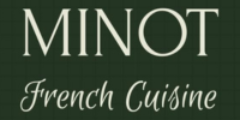The Evolution and History of French Cuisine
French cuisine, renowned for its rich flavors and intricate techniques, has a storied history that dates back to medieval times. The origins of French culinary traditions can be traced to the Middle Ages, when food preparation relied heavily on local ingredients and was deeply influenced by the seasonal availability of produce. During this period, the use of herbs and spices became more sophisticated, laying the groundwork for the robust flavors characteristic of French dishes.
The Renaissance period marked a significant transformation in French cuisine, fueled by the cultural exchange between Italy and France. This era introduced new ingredients, cooking methods, and an emphasis on artistry in food presentation. French royalty, particularly during the reign of Louis XIV, played a pivotal role in refining culinary standards. The opulent banquets of Versailles showcased elaborate dishes and set the stage for what would later become haute cuisine.
The French Revolution brought another wave of change, democratizing food culture and making sophisticated cooking accessible to the wider population. As monarchy fell, many chefs previously employed by aristocrats opened public restaurants, thus popularizing a range of culinary techniques and dishes among common people. This period also saw the publication of several significant culinary texts, which documented recipes and cooking practices, further spreading and standardizing French culinary traditions.
Among the key contributors to French cuisine were chefs such as Marie-Antoine Carême and Auguste Escoffier. Carême, often referred to as the founder of haute cuisine, revolutionized pastry-making and established a systematic approach to French cookery. Escoffier, on the other hand, streamlined culinary practices and introduced the brigade system in professional kitchens, which is still in use today.
These historical milestones collectively shaped the modern perception of French gastronomy, intertwining sophistication with simplicity. The culinary texts and techniques that emerged from these periods continue to influence chefs and home cooks around the world, fostering an enduring appreciation for the depth and elegance of French cuisine.
Distinctive Ingredients and Signature Dishes in French Cuisine
French cuisine is renowned for its distinct flavors and ingredients that are fundamental to its widespread appeal. Central to French culinary artistry are cheeses, wines, breads, and herbs, which serve as the backbone of many traditional recipes. France boasts over 400 varieties of cheese, each with its own unique texture and taste, such as the creamy Brie, the pungent Roquefort, and the nutty Comté. These cheeses are not just accompaniments but pivotal components in French dishes.
Wines, another cornerstone, are meticulously chosen to complement and enhance the flavors of meals. With regions like Bordeaux, Burgundy, and Champagne producing world-class wines, the pairing of wine with food is an integral aspect of French dining culture. Similarly, breads, particularly the iconic baguette and the buttery croissant, are ubiquitous at French tables, offering versatility from simple sandwiches to elaborate culinary creations.
Herbs such as tarragon, thyme, and rosemary, alongside garlic and shallots, elevate the depth of flavor in French cuisine. These herbs are used generously in broths, sauces, and marinades, imparting aromatic nuances essential to French cooking techniques.
Signature dishes exemplify the rich flavors and meticulous preparation that French cuisine demands. Coq au Vin, a classic from Burgundy, involves slow-cooking chicken in red wine, mushrooms, and bacon, resulting in a deeply flavorful stew. Bouillabaisse, hailing from Provence, is a fragrant seafood stew featuring a variety of fish, herbs, and saffron. Ratatouille, a vegetable medley from Nice, showcases the harmony of eggplant, zucchini, tomatoes, and bell peppers, cooked to a tender delicacy.
Crêpes, originating from Brittany, are versatile thin pancakes that can be enjoyed with sweet or savory fillings. They illustrate the creativity and adaptability inherent in French gastronomy.
Regional specialties highlight the influence of local terroir on French cuisine’s diversity. For instance, Alsace’s Choucroute garnie features sauerkraut with sausages and pork, reflecting the region’s Germanic influence. The lush valleys of the Loire produce exquisite goat cheeses, while Provence is celebrated for its sun-drenched produce and aromatic herbs.
Contemporary French gastronomy respects tradition while embracing innovation. Classic dishes are reimagined using modern techniques and global flavors, ensuring that French cuisine remains dynamic and relevant in today’s culinary landscape. Young chefs are revitalizing heritage recipes, creating a vibrant fusion of the old and the new that continues to enchant food lovers worldwide.
